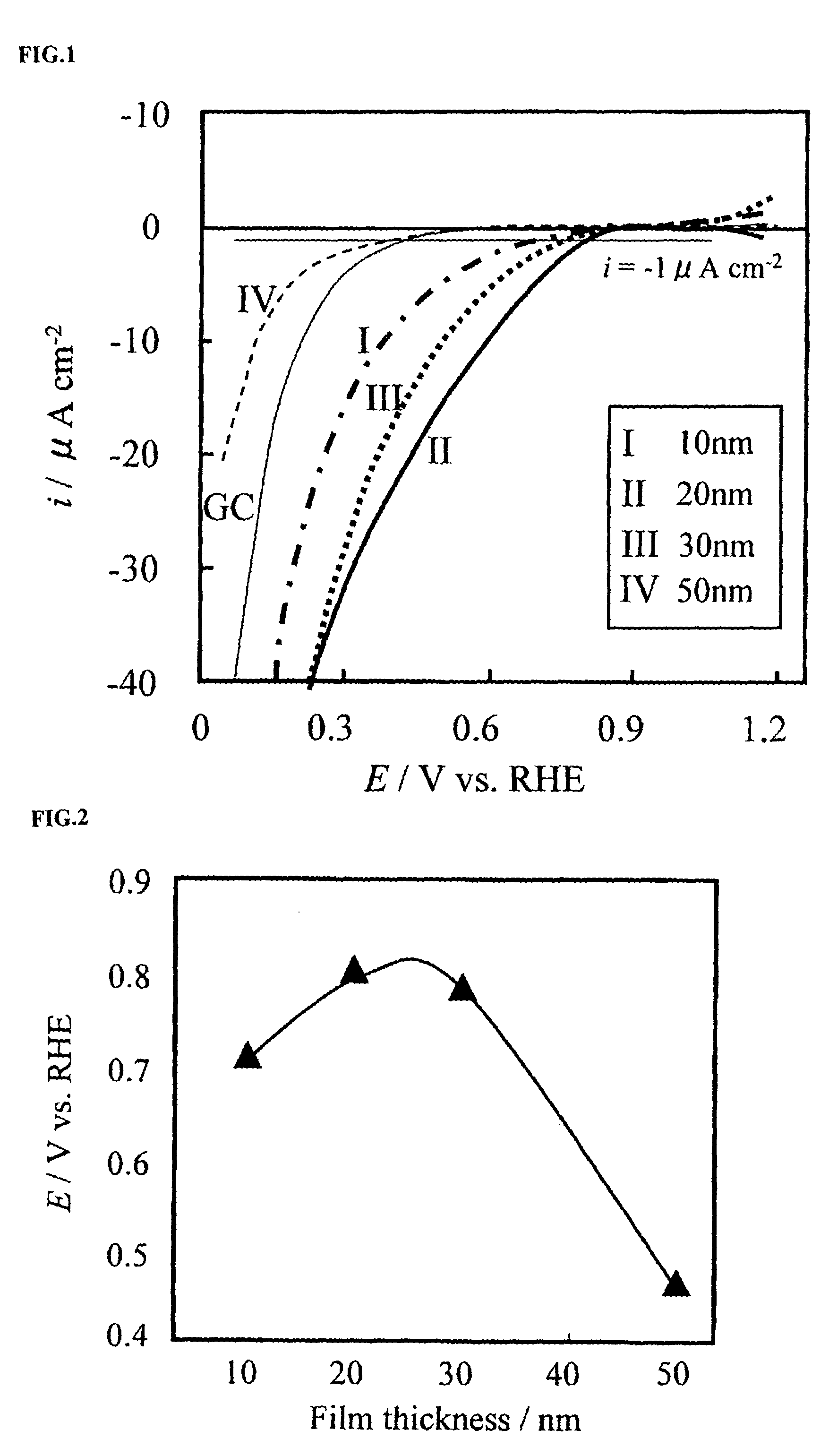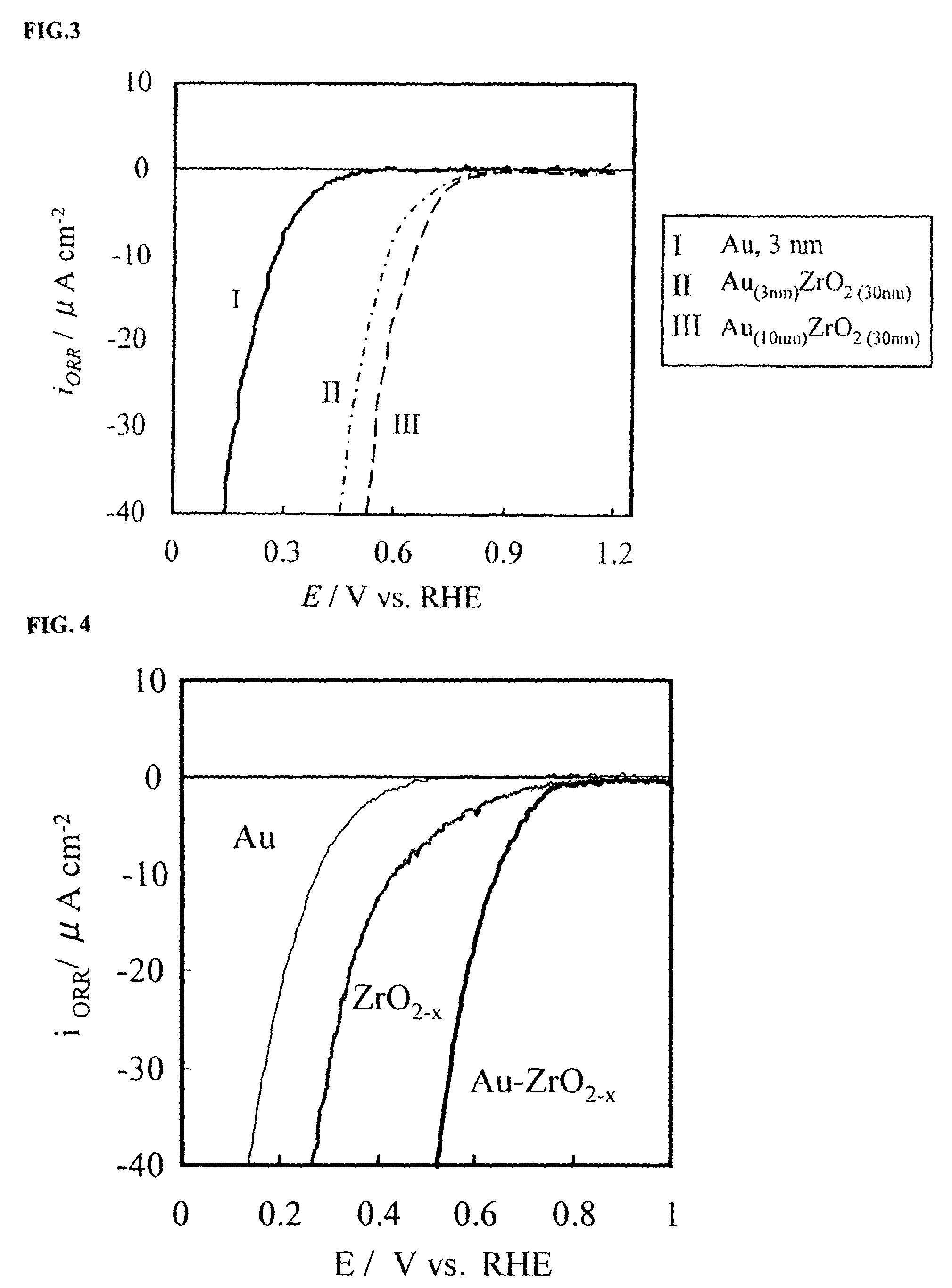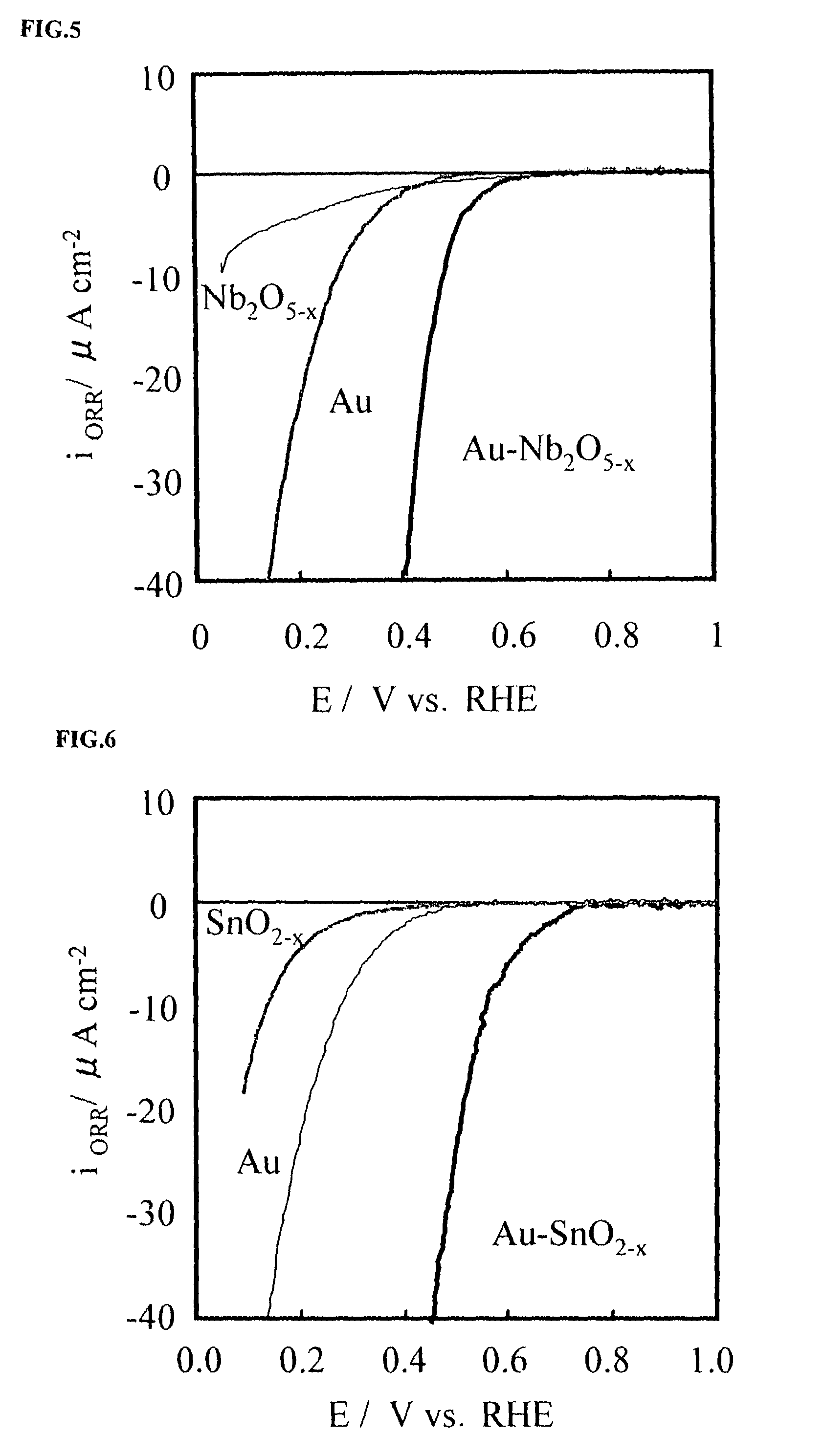Corrosion resistant metal oxide electrode catalyst for oxygen reduction
a metal oxide electrode catalyst and oxygen reduction technology, which is applied in the direction of electrochemical generators, aqueous electrolyte fuel cells, cell components, etc., can solve the problems of not being stably present, double oxides are not suitable for oxygen reduction electrode catalysts, and hardly any alternative to noble metals, etc., to achieve high corrosion resistance and further improve the oxygen reduction activity of the electrod
- Summary
- Abstract
- Description
- Claims
- Application Information
AI Technical Summary
Benefits of technology
Problems solved by technology
Method used
Image
Examples
example 1
[0055]Using a glassy carbon cylinder with a diameter of 5.2 mm as a base, a gold layer of 10 nm was first formed on a bottom face thereof by a double sputtering technique. Then, a metal oxide electrode catalyst layer was formed by sputtering, the metal oxide including zirconium as the transition metal. An Au—ZrO2-x electrode catalyst was thereby produced. The helium pressure during sputtering was set at 1×10−3 Pa or less. Au and stoichiometric zirconium oxide were used as sputtering targets.
[0056]Using a quartz oscillation-type film thickness meter, the amount of sputtering was measured. A zirconia oxide electrode with a zirconia oxide film thickness of about 30 nm was formed. The atomic compositional ratios between zirconium and oxygen at the surface and in the interior were identified by XPS. The results thereof are shown in Table 1 below.
[0057]
TABLE 1SurfaceInteriorElementOZrOZrCompositional67.932.162.137.9ratio (%)
[0058]The atomic compositional ratios between Zr and O calculated...
example 2
[0061]An Au—NbO5-x electrode catalyst was produced under the same conditions as in Example 1 except that niobium was used as the transition metal. The catalytic activity of the resulting Au—NbO5-x electrode was evaluated in relation to an oxygen reduction reaction under the same conditions as in Example 1. FIG. 5 shows the current-potential curve of the resulting Au—NbO5-x electrode in comparison with an Au only electrode and a NbO5-x electrode. It is evident that the oxygen reduction activity of the NbO5-x electrode was improved by the Au layer.
example 3
[0062]An Au—SnO2-x electrode catalyst was produced under the same conditions as in Example 1 except that tin was used as the transition metal. The catalytic activity of the resulting Au—SnO2-x electrode was evaluated in relation to an oxygen reduction reaction under the same conditions as in Example 1. FIG. 6 shows the current-potential curve of the resulting Au—SnO2-x electrode in comparison with an Au only electrode and a SnO2-x electrode. It is evident that the oxygen reduction activity of the SnO2-x electrode was improved by the Au layer.
PUM
| Property | Measurement | Unit |
|---|---|---|
| thickness | aaaaa | aaaaa |
| electrode potential | aaaaa | aaaaa |
| reversible hydrogen electrode potential | aaaaa | aaaaa |
Abstract
Description
Claims
Application Information
 Login to View More
Login to View More - R&D
- Intellectual Property
- Life Sciences
- Materials
- Tech Scout
- Unparalleled Data Quality
- Higher Quality Content
- 60% Fewer Hallucinations
Browse by: Latest US Patents, China's latest patents, Technical Efficacy Thesaurus, Application Domain, Technology Topic, Popular Technical Reports.
© 2025 PatSnap. All rights reserved.Legal|Privacy policy|Modern Slavery Act Transparency Statement|Sitemap|About US| Contact US: help@patsnap.com



